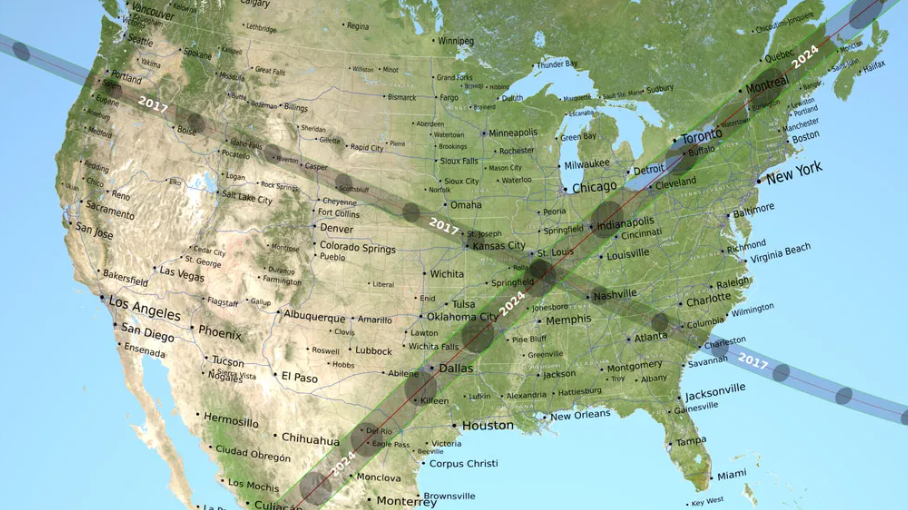On April 8th, a portion of North America will be in the path of a total Solar Eclipse. In the event of a total solar eclipse, the moon is passing in the line directly between the Sun and the Earth. The last total solar eclipse to pass over North America was back in 2017. It pulled in roughly 215 million viewers – both in person and digitally. This year’s eclipse is expected to be even more exciting than the one in 2017.
First off, the path of the eclipse is much larger than the path of the 2017 eclipse. In the event of a solar eclipse, there is a path of totality. This is the path where the moon is totally blocking the sun. While an eclipse is going to be partially visible outside of the path, the path of totality is often the most sought after place to see the eclipse. This year, the eclipse will range almost twice the area of the last path, meaning more people will be able to see it at any given time. Additionally, this path is more aligned with more populated cities, allowing for more people to see the full eclipse. Even for people who do not live in the path of totality, a partial eclipse will be visible to 99% of the US population.
Another thing that will make this eclipse really special is how long it will stay in totality. In 2017, the longest the full eclipse was visible was 2 minutes and 42 seconds. This year, the totality will last nearly twice as long; upwards of 4 minutes and 28 seconds in some parts of Mexico.
Scientifically, this eclipse is also more exciting. The sun goes through phases. Its magnetic field will flip every 11 years or so. This flipping causes solar minimums and solar maximums, times of heightened or lowered solar activity. In 2017, the sun was at a solar minimum, making it less likely to show interesting explosions. In 2024, the sun will be at a solar maximum, meaning it’s likely for viewers to see solar prominences, which appear as loops or strings coming off the sun.
This year’s eclipse is super awesome and many viewers are looking forward to it. Make sure to stay safe and to not look at the sun directly without the necessary protection.
Cites
https://science.nasa.gov/solar-system/skywatching/how-is-the-2024-total-solar-eclipse-different-than-the-2017-eclipse/
https://science.nasa.gov/eclipses/future-eclipses/eclipse-2024/








